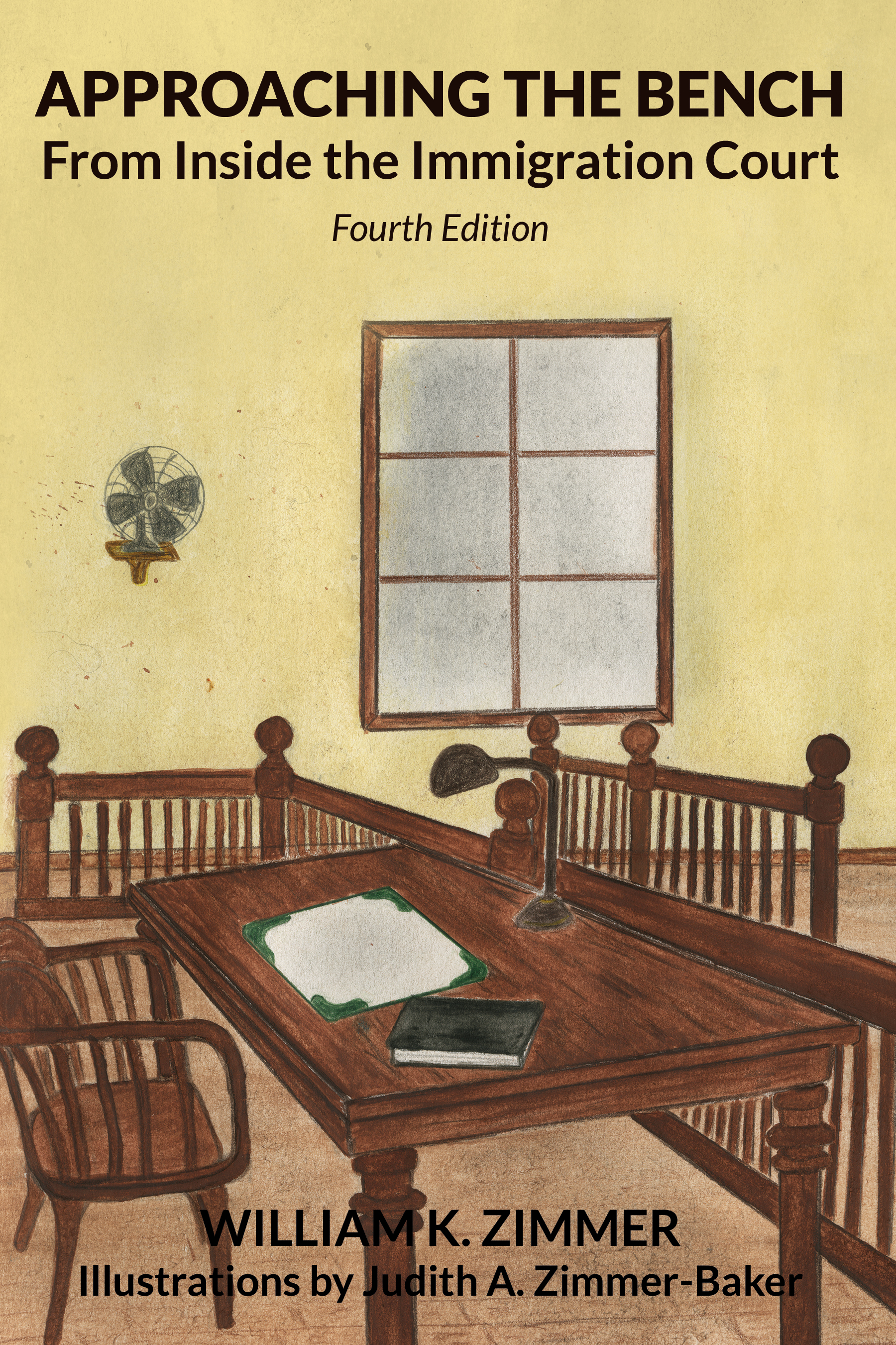Classification of Aggravated Robbery as a Theft Offense

The procedural history, facts of record, holding and rationale in Rodriguez Gonzalez v. Garland (March 3, 2023) No. 22-60091 are as follows:
Case History
The Department of Homeland Security (“DHS”) charged that the Petitioner is subject to removal from the United States.
An Immigration Judge sustained the removal charge and determined that the Petitioner was ineligible for asylum.
The Board of Immigration Appeals (“BIA”) affirmed the decision of the Immigration Judge.
Petitioner filed a motion to reopen proceedings which was granted.
An Immigration Judge again found the Petitioner ineligible for asylum and independently ineligible for deferral of removal under the Convention Against Torture (“CAT”).
The BIA affirmed the Immigration Judge’s decision.
The Petitioner then filed a petition for review.
Facts
- The Petitioner is a native citizen of Mexico who had received lawful permanent resident status in the United States in 2003.
- In 2014, the Petitioner pleaded guilty to aggravated robbery in Texas and was sentenced to imprisonment for eight years.
- The DHS served the Petitioner with a notice to appear (Form I-862) charging that he was subject to removal from the United States because he had been convicted of committing an aggravated felony. See section 237(a)(2)(A)(iii) of the Act, as amended (“the Act”).
- An Immigration Judge sustained the removal charge and also determined that the Petitioner was ineligible for asylum based on his conviction of an offense classified as an aggravated felony.
- The BIA affirmed the Immigration Judge's decision.
- Following the decision of the United States Supreme in Sessions v. Dimaya, 138 S. Ct 1204 (2018), in which it was held that the “crime of violence” designation in the relevant removal statute was unconstitutionally vague, (Sessions v. Dimaya, at 1210) the Petitioner filed a motion to reopen proceedings which was granted.
- Again, in reopened proceedings, an Immigration Judge found the Petitioner ineligible for asylum based on his conviction of an aggravated felony and independently ineligible for CAT relief.
- Again, the BIA affirmed the decision of the Immigration Judge.
- The Petitioner then filed a petition for review.
Held
Petition DENIED
Rationale
The Petitioner challenged the categorical classification of his Texas robbery offense as an aggravated felony “theft offense” under section 101(a)(43)(G) of the Act because the Texas definition of robbery includes attempted theft which does not exactly match the specific element of theft.
In particular, the Petitioner argued that attempted theft does not involve an actual taking or exercise of control over the property of another.
According to the Petitioner, an actual taking or exercise of control over the property of another must be proven to establish a theft. Attempted theft, however, does not involve the actual taking or exercise control over the property of another.
Consequently, the Petitioner insisted that the BIA had erred as a matter of law by determining that aggravated robbery, which could involve attempted theft, can be categorically classified as a theft offense described in the aggravated felony definition under section 101(a)(43)(G) of the Act.
The Fifth Circuit Court of Appeal reasoned as follows:
Aggravated Felony Charge
- It is not necessary to determine whether a defendant convicted under Texas Penal Code § 29.03 was convicted for attempted theft or actual theft because, as a categorical matter, it makes no difference.
- Whether the Petitioner’s conduct occurred in an attempt to commit, during the commission, or in immediate flight after the attempt or commission of theft, he was convicted of an offense involving either attempted theft, or theft, either of which is an aggravated felony under section 101(a)(43)(G) (theft) or section 101(a)(43)(U) (attempts) of the Act.
Ineligibility For Asylum
- Petitioner is ineligible for asylum because his conviction qualifies as a non-political felony crime of violence as defined in 18 U.S.C. § 16(a). See United States v. Lerma, 877 F.3d 628, at 636 (5th Cir. 2017).
- The Fifth Circuit Court of Appeal had concluded in United States v. Lerma that the petitioner’s aggravated robbery offense under § 29.03(a)(2) of the Texas Penal Code, satisfies the elements or force clause of 18 U.S.C. § 924(e)(2)(B)(i), which essentially mirrors the force clause for a crime of violence under 18 U.S.C. § 16(a) (i.e. “an offense that has as an element the use, attempted use, or threatened use of physical force against the person or property of another.”
- Although the BIA did not address this argument, “affirmance may be warranted ‘where there is no realistic possibility that . . . the BIA would have reached a different conclusion.’” Enriquez-Gutierrez v. Holder, 612 F.3d 400, at 407 (5th Cir. 2010) (quoting Cao He Lin v. U.S. Dep’t of Justice, 428 F.3d 391, at 401 (2d Cir. 2005)).
Eligibility Under The CAT
- Administrative findings of fact are conclusive unless any reasonable adjudicator would be compelled to conclude to the contrary.” See section 242(b)(4)(B) of the Act.
- To obtain CAT relief, an applicant must show that it is more likely than not that the applicant will be tortured if the applicant returns to the applicant’s country of origin, and that the government of that country will acquiesce in or be willfully blind to that torture. Martinez-Lopez v. Barr, 943 F.3d 766, at 772 (5th Cir. 2019).
- The Petitioner identified no evidence which casts doubt on the decisions of the Immigration Judge and the BIA.
- The Petitioner neither conclusively demonstrated a likelihood that he will be tortured nor that the Mexican government will acquiesce in or willfully ignore his potential torture.
- Therefore, the BIA correctly determined that the Petitioner failed to make the requisite showing for deferral of removal under the CAT.
Commentary
Some readers might be interested to know that I learned in the late 1980s, when working as a prosecutor in the Montgomery County, Texas drafting indictments for presentation to the grand jury, not to use the word, "attempted," to describe a robbery or an aggravated robbery offense precisely because it would be redundant. As pointed out in Rodriguez Gonzalez v. Garland, the definition of robbery in the Texas Penal Code includes theft as well as an attempt to commit theft under coercive circumstances.
The reliance of the Fifth Circuit Court of Appeal on United States v. Lerma, 877 F.3d 628 (5th Cir. 2017) as authority for classification of the Petitioner’s aggravated robbery offense as a crime of violence under 18 U.S.C. § 16(a) might provoke wonder about how the Fifth Circuit Court of Appeal could rely on a statute that had been declared unconstitutionally vague. See Sessions v. Dimaya, 138 S. Ct 1204, at 1210 (2018).
The two-part language of 18 U.S.C. § 16 is as follows:
(a) an offense that has as an element the use, attempted use, or threatened use of physical force against the person or property of another, or
(b) any other offense that is a felony and that, by its nature, involves a substantial risk that physical force against the person or property of another may be used in the course of committing the offense.
Sessions v. Dimaya, at 1211.
The answer is that the Sessions v. Dimaya decision narrowly limits the unconstitutionally vague designation to 18 U.S.C. § 16(b) which Justice Kagan in her majority opinion described as a residual clause. See Sessions v. Dimaya, at 1211.
So it is important to note that only 18 U.S.C. § 16(b) has been deemed unconstitutionally vague; not § 16(a). In United States v. Lerma, the Fifth Circuit Court of Appeal based its holding on 18 U.S.C. § 16(a) without reliance on the residual clause under § 16(b) which was labeled unconstitutionally vague the following year.
Mandatory Denial of Asylum
Governing law and regulations dictate mandatory denial of asylum applications in certain specific circumstances. The circumstances requiring mandatory denial are as follows:
- the alien ordered, incited, assisted, or otherwise participated in the persecution of any person on account of race, religion nationality, membership in a particular social group, or political opinion;
- the alien, having been convicted by a final judgment of a particularly serious crime, constitutes a danger to the community of the United States;
- there are serious reasons for believing that the alien has committed a serious nonpolitical crime outside the United States;
- there are reasonable grounds for regarding the alien as a danger to the security of the United States;
- the alien has engaged in terrorist activity; or
- the alien was firmly resettled in another country prior to arriving in the United States.
See section 208(b)(2)(A) of the Act.
There is a special rule for classifying aggravated felonies (defined under section 101(a)(43) of the Act) as particularly serious crimes. See section 208(b)(2)(B)(i) of the Act.
In short, any aggravated felony conviction is a conviction for a particularly serious crime and requires mandatory denial of the convicted alien’s asylum application. Matter of K-, 20 I&N Dec. 418 (BIA 1991); Matter of C-, 20 I&N Dec. 529 (BIA 1992).
This is why the BIA determined that the Petitioner in Rodriguez Gonzalez v. Garland (March 3, 2023) No. 22-60091 was ineligible for asylum.
Mandatory Denial of Withholding of Removal
Special conditions relating to classification of an aggravated felony as a particularly serious crime that requires mandatory denial are different for withholding of removal applications.
As noted above in the discussion of asylum, any conviction for an aggravated felony requires mandatory denial of the asylum application. However, for withholding of removal applications, a conviction for an aggravated felony is a particularly serious crime on its face only if a sentence of 5 years or more has been assessed as punishment.
If a withholding of removal applicant has been convicted of multiple aggravated felonies one or more of the aggravated felony convictions will be classified as a crime or crimes that are particularly serious on the face of the record only if all the sentences added together (i.e. aggregate sentences) amount to 5 years or more. See section 241(b)(3)(B) of the Act; 8 C.F.R. § 1208.16(d)(2), (3).
In Rodriguez Gonzalez v. Garland, the Petitioner had been sentenced to imprisonment for eight years. Consequently, his aggravated robbery offense, once it had been properly classified as an aggravated felony in the context of immigration law, squarely falls within the scope of section 241(b)(3)(B) of the Act which designates it as a particularly serious crime that triggers mandatory denial of withholding of removal.
Since the sentence assessed as punishment for an aggravated felony sometimes governs classification of the aggravated felony as a particularly serious crime in the context of a withholding of removal hearing, it is important to realize that actual incarceration is not required for the sentence to justify classification of the aggravated felony as a particularly serious crime:
Any reference to a term of imprisonment with respect to an offense is deemed to include the period of incarceration or confinement ordered by a court of law regardless of any suspension of the imposition or execution of that imprisonment or sentence in whole or in part.
See section 101(a)(48)(B) of the Act.
Regardless of the 5 year sentence requirement for automatic classification of aggravated felonies as particularly serious crimes, an aggravated felony can nevertheless be classified as a particularly serious crime on a case by case basis using the same criteria discussed above with regard to asylum applications. See section 241(b)(3)(B) of the Act; 8 C.F.R. § 1208.16(d)(2), (3).
Section 101(a)(48)(B) of the Act applies to convictions and sentences entered before, on, or after September 30, 1996 (i.e. applicable retroactively). See section 322(c) of the Illegal Immigration Reform and Immigrant Responsibility Act of 1996. Matter of S-S-, 21 I&N Dec. 900 (BIA 1997).
The Fifth Circuit Court of Appeal succinctly noted the distinct disabling provisions relating to asylum under section 208 of the Act compared to withholding of removal under section 241(b) of the Act. See Rodriguez Gonzalez v. Garland, at p.3.
